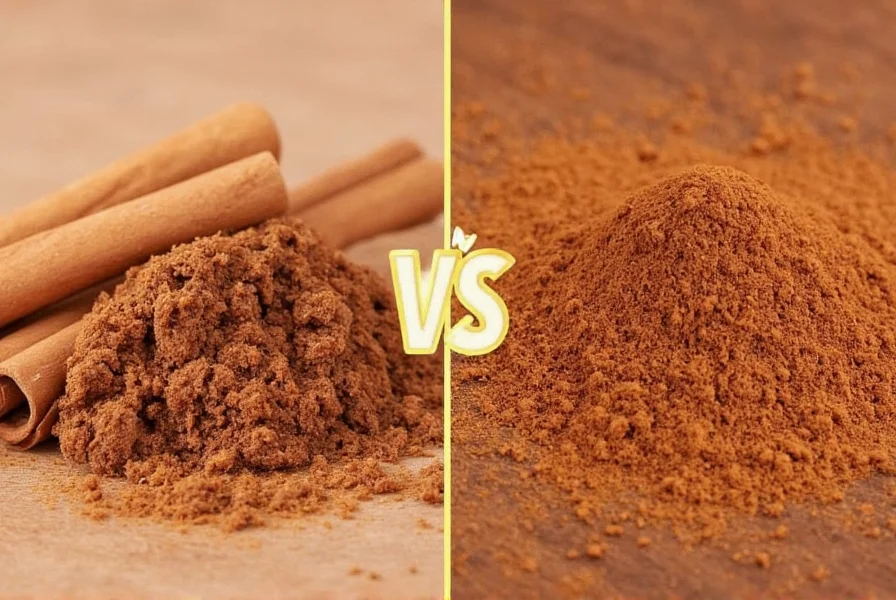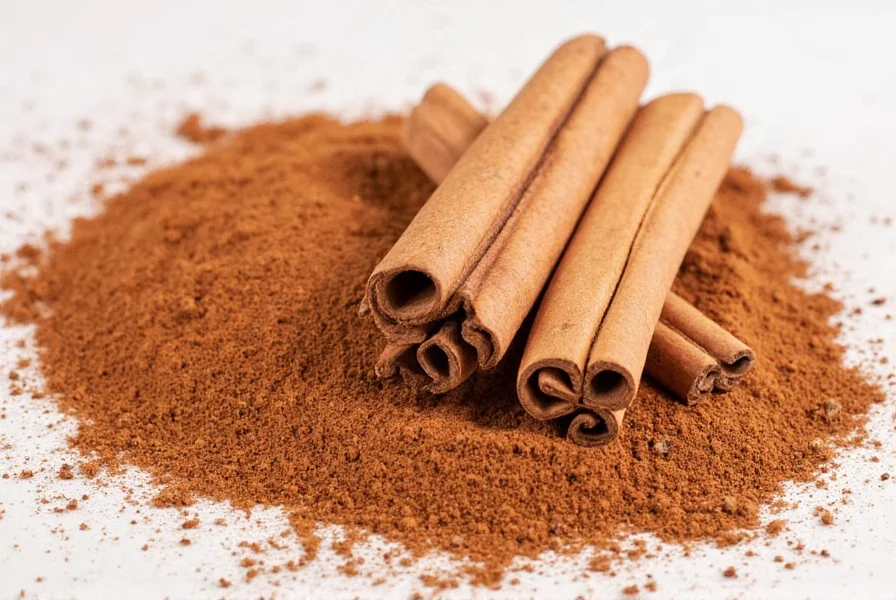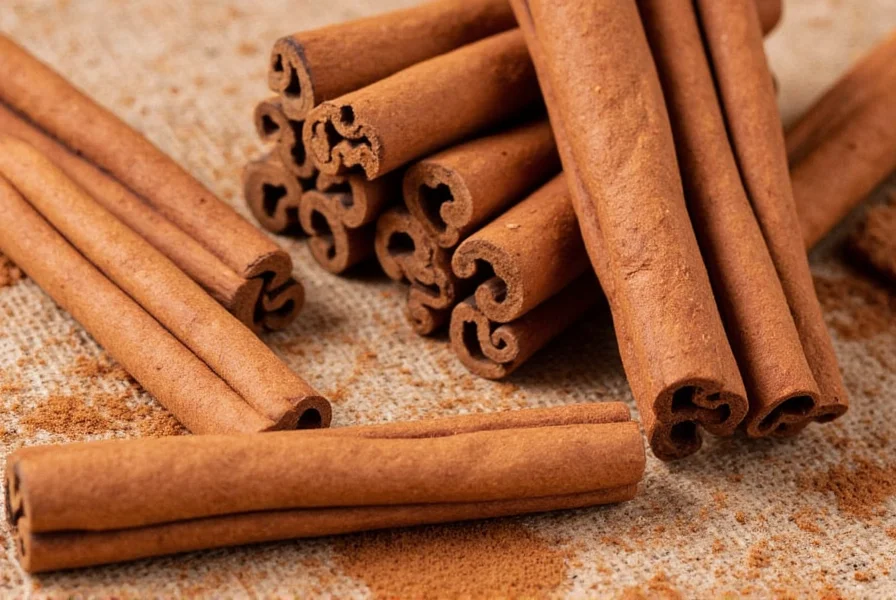When comparing saigon cinnamon vs cinnamon, it's crucial to understand that “regular” cinnamon typically refers to either Cassia cinnamon (Cinnamomum aromaticum) from China or true Ceylon cinnamon (Cinnamomum verum) from Sri Lanka. Saigon cinnamon, scientifically classified as Cinnamomum loureiroi, originates from Vietnam and represents a distinct variety within the cassia family. This distinction matters significantly for both culinary applications and health considerations, as the coumarin content—a compound that can affect liver health in large quantities—varies dramatically between these types.
Understanding Cinnamon Varieties
The term “cinnamon” creates confusion because it encompasses several related but distinct spices. True cinnamon, or Ceylon cinnamon, features multiple thin, delicate layers that form a tight scroll. In contrast, cassia varieties (including both Chinese cassia and Saigon cinnamon) have a single thick, hard bark layer that forms a loose, rugged scroll. Most “regular” cinnamon sold in North American and European supermarkets is actually cassia, not true Ceylon cinnamon.
What Makes Saigon Cinnamon Unique
Saigon cinnamon, cultivated primarily in central Vietnam's Quang Ngai province, contains the highest concentration of cinnamaldehyde among all cinnamon varieties—up to 25% compared to 12-17% in Chinese cassia. This chemical compound delivers that characteristic spicy-sweet aroma and flavor. The higher concentration explains why Saigon cinnamon tastes noticeably more intense, with pronounced notes of cherry and citrus alongside its classic warmth. Professional bakers often prefer it for recipes requiring bold cinnamon presence, such as snickerdoodles, cinnamon rolls, and spiced chai.

Regular Cinnamon: Cassia vs Ceylon
When consumers ask about “regular cinnamon,” they're usually referring to either:
- Chinese cassia (Cinnamomum aromaticum): The most common supermarket variety in North America, with medium intensity and moderate coumarin levels (0.5-1%)
- Ceylon cinnamon (Cinnamomum verum): Often labeled “true cinnamon,” with delicate flavor, multiple papery layers, and negligible coumarin content
| Characteristic | Saigon Cinnamon | Chinese Cassia | Ceylon Cinnamon |
|---|---|---|---|
| Botanical Name | Cinnamomum loureiroi | Cinnamomum aromaticum | Cinnamomum verum |
| Origin | Vietnam | China | Sri Lanka |
| Flavor Intensity | Very strong (25% cinnamaldehyde) | Moderate (12-17% cinnamaldehyde) | Mild (5-10% cinnamaldehyde) |
| Coumarin Content | 4-6% | 0.5-1% | Trace amounts |
| Texture | Thick, single-layer, rough | Thick, single-layer | Multiple thin, papery layers |
| Price (per ounce) | $2.50-$3.50 | $1.00-$1.50 | $2.00-$3.00 |
Health Implications of Saigon Cinnamon vs Regular Cinnamon
The most significant difference between saigon cinnamon and other varieties lies in coumarin content. The European Food Safety Authority recommends a maximum daily coumarin intake of 0.1 mg per kilogram of body weight. For a 150-pound adult, this translates to approximately:
- Saigon cinnamon: 0.5-1 gram maximum daily (about 1/4 to 1/2 teaspoon)
- Chinese cassia: 2-4 grams maximum daily (about 1-2 teaspoons)
- Ceylon cinnamon: No practical limit due to negligible coumarin
Individuals with liver conditions or those consuming cinnamon regularly in supplements should particularly consider these differences when choosing between saigon cinnamon vs regular cinnamon options.
Culinary Applications: When to Use Which Type
Saigon cinnamon's intense flavor makes it ideal for applications where cinnamon should dominate:
- Bold baked goods like snickerdoodles and cinnamon rolls
- Spiced coffee and hot chocolate
- Meat rubs for pork and duck
- Preserves and fruit compotes
Regular cassia works well in:
- General baking where balanced spice is desired
- Breakfast cereals and oatmeal
- Mildly spiced sauces
Ceylon cinnamon shines in:
- Delicate desserts like custards and flans
- Seafood dishes
- Traditional Mexican hot chocolate
- Situations requiring daily consumption

Identifying Authentic Varieties
Many consumers struggle with saigon cinnamon vs cinnamon identification due to inconsistent labeling. Look for these indicators:
- Saigon cinnamon: Should specify “Cinnamomum loureiroi” or “Vietnamese cinnamon”; dark reddish-brown color; rough, thick bark; strong, sweet aroma with cherry notes
- Chinese cassia: Often labeled simply “cinnamon”; reddish-brown; moderately strong aroma
- Ceylon cinnamon: Labeled “Ceylon” or “true cinnamon”; light tan color; multiple thin layers; delicate, citrusy aroma
When shopping for saigon cinnamon vs regular cinnamon, specialty spice retailers typically provide more accurate labeling than general grocery stores. For health-conscious consumers, third-party testing certifications can verify coumarin levels.
Storage and Shelf Life Considerations
All cinnamon varieties lose potency over time, but Saigon's higher oil content gives it slightly better shelf stability. Store both types in airtight containers away from light and heat. Properly stored:
- Saigon cinnamon: Maintains peak flavor for 2-3 years
- Regular cassia: Maintains peak flavor for 1.5-2 years
- Ceylon cinnamon: Maintains peak flavor for 1-1.5 years
Grinding just before use preserves maximum flavor in all varieties. Never store cinnamon in the refrigerator, as moisture accelerates flavor degradation.
Making the Right Choice for Your Needs
When deciding between saigon cinnamon vs cinnamon varieties, consider both your recipe requirements and consumption frequency. For occasional baking where intense cinnamon flavor is desired, Saigon delivers unmatched depth. For daily use in coffee, oatmeal, or health-focused applications, Ceylon cinnamon provides the safest option with subtle flavor. Chinese cassia offers a middle ground for general baking needs. Understanding these distinctions transforms your saigon cinnamon vs regular cinnamon decision from a simple purchase into a strategic culinary choice that enhances both flavor and wellbeing.











 浙公网安备
33010002000092号
浙公网安备
33010002000092号 浙B2-20120091-4
浙B2-20120091-4